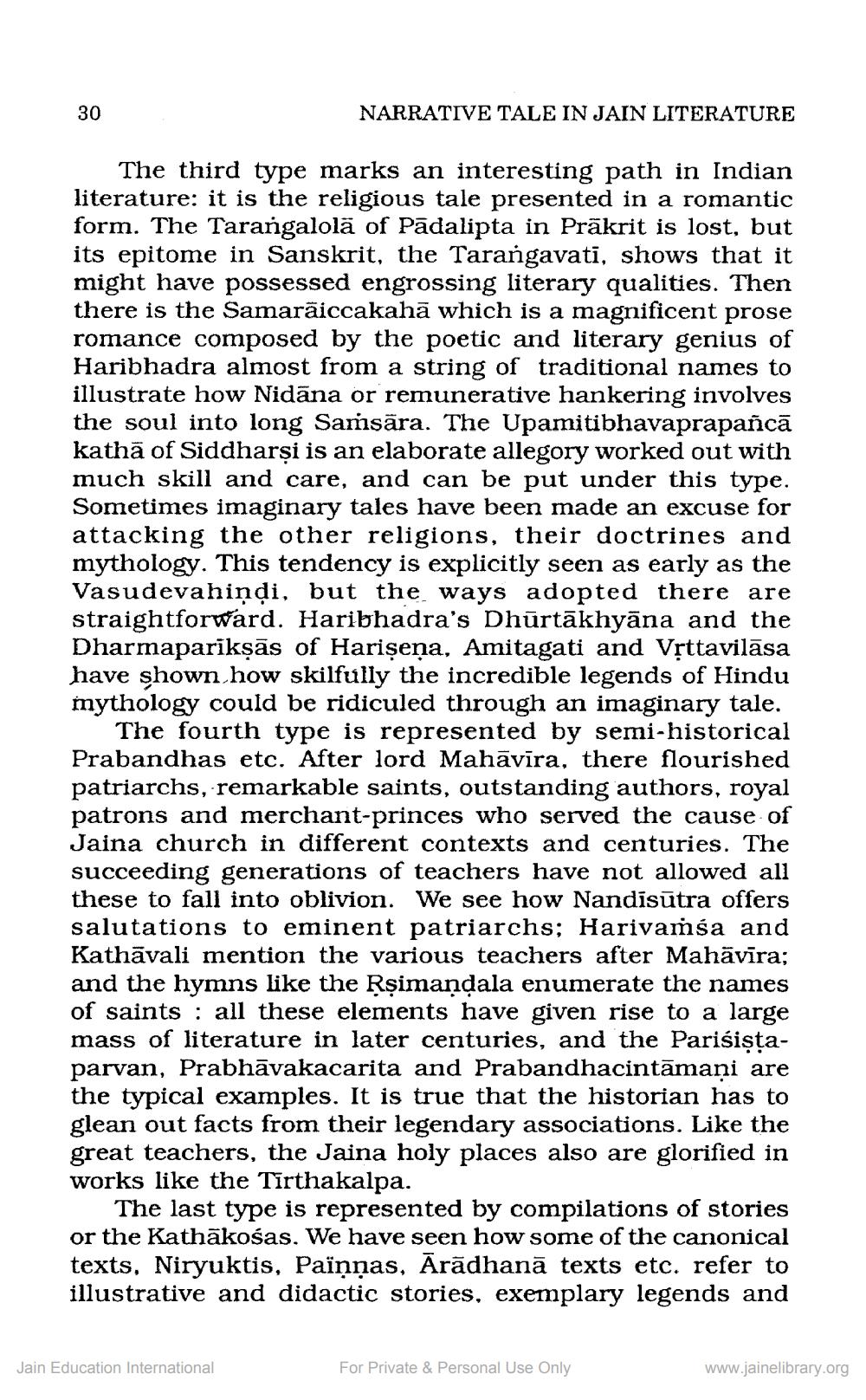________________
30
NARRATIVE TALE IN JAIN LITERATURE
The third type marks an interesting path in Indian literature: it is the religious tale presented in a romantic form. The Tarangalolā of Pādalipta in Prākrit is lost, but its epitome in Sanskrit, the Tarangavati, shows that it might have possessed engrossing literary qualities. Then there is the Samarāiccakahā which is a magnificent prose romance composed by the poetic and literary genius of Haribhadra almost from a string of traditional names to illustrate how Nidāna or remunerative hankering involves the soul into long Samsāra. The Upamitibhavaprapancā kathā of Siddharși is an elaborate allegory worked out with much skill and care, and can be put under this type. Sometimes imaginary tales have been made an excuse for attacking the other religions, their doctrines and mythology. This tendency is explicitly seen as early as the Vasudevahiņdi, but the ways adopted there are straightforward. Haribhadra's Dhūrtākhyāna and the Dharmaparikṣās of Harişeņa, Amitagati and Vịttavilāsa have shown how skilfully the incredible legends of Hindu mythology could be ridiculed through an imaginary tale.
The fourth type is represented by semi-historical Prabandhas etc. After lord Mahāvīra, there flourished patriarchs, remarkable saints, outstanding authors, royal patrons and merchant-princes who served the cause of Jaina church in different contexts and centuries. The succeeding generations of teachers have not allowed all these to fall into oblivion. We see how Nandisūtra offers salutations to eminent patriarchs; Harivamsa and Kathāvali mention the various teachers after Mahāvīra; and the hymns like the Rşimandala enumerate the names of saints : all these elements have given rise to a large mass of literature in later centuries, and the Parisistaparvan, Prabhāvakacarita and Prabandhacintamani are the typical examples. It is true that the historian has to glean out facts from their legendary associations. Like the great teachers, the Jaina holy places also are glorified in works like the Tirthakalpa.
The last type is represented by compilations of stories or the Kathākośas. We have seen how some of the canonical texts, Niryuktis, Païnnas, Arādhanā texts etc. refer to illustrative and didactic stories, exemplary legends and
Jain Education International
For Private & Personal Use Only
www.jainelibrary.org




